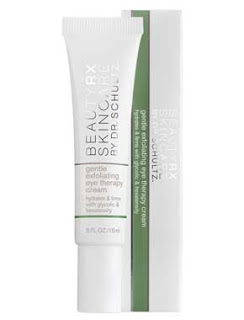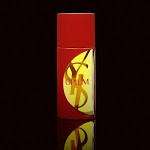The Skinterrogation column features Q&A seshes with dermatologists, aestheticians and other major movers and shakers in the skin care industry.
Dr. Neal Schultz is one of the nicest derms in the business and I can also credit him with helping me get my skin look the best it has in YEARS. The secret? Glycolic acid and lots of it, a shocking diagnosis for this Retin-A loving reviewer. Here, I caught up with the glycolic guru about the benefits of exfoliation, whether you can combine glycolic acid with Retin-A and how to apply glycolic acid.
How can we get the best exfoliation?
To get the very best results from your chemical exfoliant, you want to use the optimal strength of the product. The optimal strength for you is the highest strength your skin will tolerate without irritation or inflammation. And you can achieve that optimal strength not by using the highest strength exfoliant right away, but instead by starting with a low strength and gradually increasing it. That’s because your skin usually acclimates to the slight potential irritancy of chemical exfoliants over time. So, by starting at a low strength that won’t irritate your skin and then by increasing the strength slowly, you can induce tolerance in your skin and achieve optimal exfoliation. To accomplish this you must use a chemical exfoliant that is available in a variety of strengths. That’s one of the reasons I love glycolic, the gold standard of chemical exfoliants. Glycolics are available for at home use in strengths varying from one to 20%.
Can you combine glycolic acid and Retin-A?
Retin-A is not compatible with some other exfoliants because of the brittle nature of Retin-A, meaning that it’s so easily broken or inactivated by other chemicals, especially acids.
Glycolic acid is sufficiently powerful to inactivate Retin-A if applied at the same time, regardless of which is applied first. You’ll get the benefit of the glycolic, which isn’t compromised by the brittle Retin-A, but most probably the Retin-A will be inactivated. Fortunately that does no harm to your skin; it simply cancels out the benefit of the Retin-A.
But you can use both Retin-A and glycolic acid in the same skincare regimen as long as they are applied hours apart from each other, such as Retin-A in the morning and glycolic at bedtime. That allows Retin-A to work without interference. And yes, I said Retin-A in the morning…. The increased sun sensitivity from Retin-A is cumulative and occurs after many days of use and doesn’t depend on what time of the day you use it. So as always, sunscreen is a must.
How should we apply glycolic acid?
As with any active ingredient, to get its full benefit you must prep by cleansing the skin. Your cleanser and toner will synergize to remove excess oils, dirt, debris and loose dead cells. And after finishing wiping with your toner, give it half a minute to completely evaporate, or take a soft cotton ball and gently remove any excess. You’re now ready to apply your glycolic! If you’re using a glycolic serum or gel, apply just a few drops with your finger to each side of your face and spread them all over, avoiding the eye area. If using glycolic pads, gently wipe your entire face, always avoiding the eye area. If you have a glycolic cream, put a pea sized amount in your palm and with a finger from your other hand dab tiny bits all over your face, again avoiding your eye area and then spread it around. I recommend using glycolic at bedtime. It should be the first product applied after you cleanse and tone. With one exception: if you’re using a blemish spot treatment and a glycolic in a cream vehicle, apply the spot treatment first.
Thanks, Dr. Schultz! Don’t forget to check out his BeautyRX Skincare line here, chock full of glycolic acid infused items. My favorite? The Gentle Exfoliating Eye Therapy Cream, with, you guessed it, a mild dose of glycolic acid.
What’s your exfoliation method of choice?
Like this post? Don’t miss another one! Subscribe via my RSS feed.









Pingback: 12 Simple Steps To Remove Stretch Marks Forever | Whats Latest
Isn’t Dr. Schultz wrong about the photodegradation of tretinoin? At least some formulations shouldn’t be applied in the morning. See, e.g., del Rosso et al. (2013, J Clin Aesthet Dermatol). It’s usually better to talk to scientists than non-researching clinicians… especially if the latter sell products.
If you weren’t anonymous, I’d consider reaching out to you. Because you are, this does seem a bit trollish.